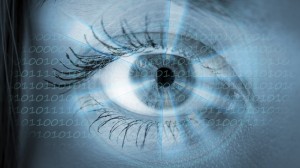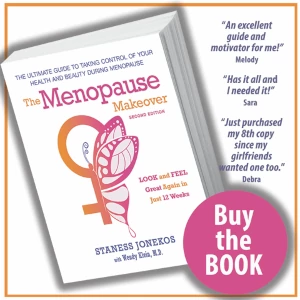 For those of us who have experienced many unpleasant menopause symptoms, did you know that dry eye is also one of them?
For those of us who have experienced many unpleasant menopause symptoms, did you know that dry eye is also one of them?
Eye health becomes increasingly important as we reach our 50s, which is why I’m shedding some light on age-related macular degeneration (AMD), the leading cause of vision loss in people over 55.
February is AMD Awareness Month, and chances are, you know someone who has the disease. Over 2 million Americans suffering from AMD and 7 million are at risk– the number is expected to double by 2020.
To help bring you this important information about AMD, I have joined the #AMDawareness campaign, sponsored by EyePromise.
WHAT IS AGE-RELATED MACULAR DEGENERATION?
The most common form of AMD is “dry” AMD, which 90% of people experience. It’s the deterioration of the retinal pigment epithelial (tissue) cells within the macula. These cells support the light-sensitive photoreceptor cells that are so critical to vision. When we look at something, the photoreceptors, (a.k.a. rods and cones) collect the images and send them to the brain, where vision takes place.
The macula is an area near the center of the eye’s retina. This tiny area is responsible for our central, sharpest vision and determines our ability to read, drive a car, see faces or colors, and view objects in fine detail.
As AMD progresses, our central vision deteriorates and starts to fail. The presence of lipid (a fatty protein) deposits, called drusen, has also been connected with the disease. While drusen likely do not cause age-related macular degeneration (AMD), their existence within the eye increases a person’s risk of developing AMD.
In about 10 percent of patients, dry AMD can become “wet” AMD, where blood vessels form under the retina, leaking blood and fluid into the eye, according to AllAboutVision. Wet AMD further (and more quickly) distorts the central vision, and can ultimately lead to blindness.
SYMPTOMS: Distorted, blurry or spotty vision, inability to see clearly in dim lighting. Imagine if a straight line looks wavy!
RISK FACTORS: Aging is the major cause of AMD, and women are more likely to have the disease than men. Genetics also plays a role, as well as smoking, which can double your risk. AMD is more common in Caucasians than in African Americans and Hispanics, one study shows.
HOW YOU CAN IMPROVE YOUR EYE HEALTH: What Every Woman Should Know About Age-Related Macular Degeneration (AMD)
Add important nutrients called zeaxanthin and lutein into your diet to help support and improve your macular health. While these ingredients can be found in many leafy greens, oily fish and fruits, you most likely are not getting an adequate dose to significantly support and protect your macular health.
“The dietary carotenoids zeaxanthin and lutein protect the most important retinal real estate of the eye–-the macula–which allows us to see detail. It is therefore critical to maintain the quality and health of this area of retinal tissue in a modern society that depends upon using computer screens and driving automobiles, safely,” said Dr. Stuart Richer, OD, PhD
If you think you are at risk for age-related macular degeneration, or might have the disease, schedule an appointment with your eye doctor today.
















